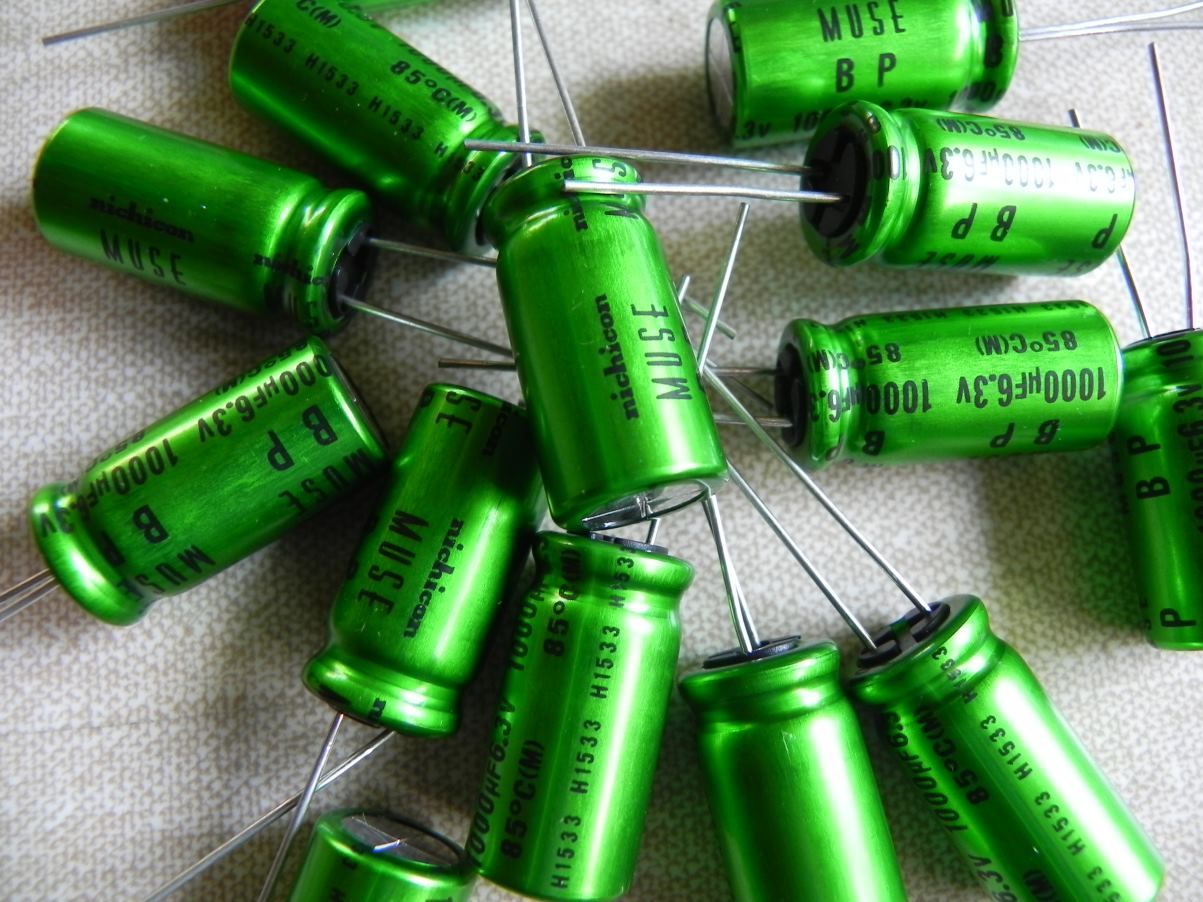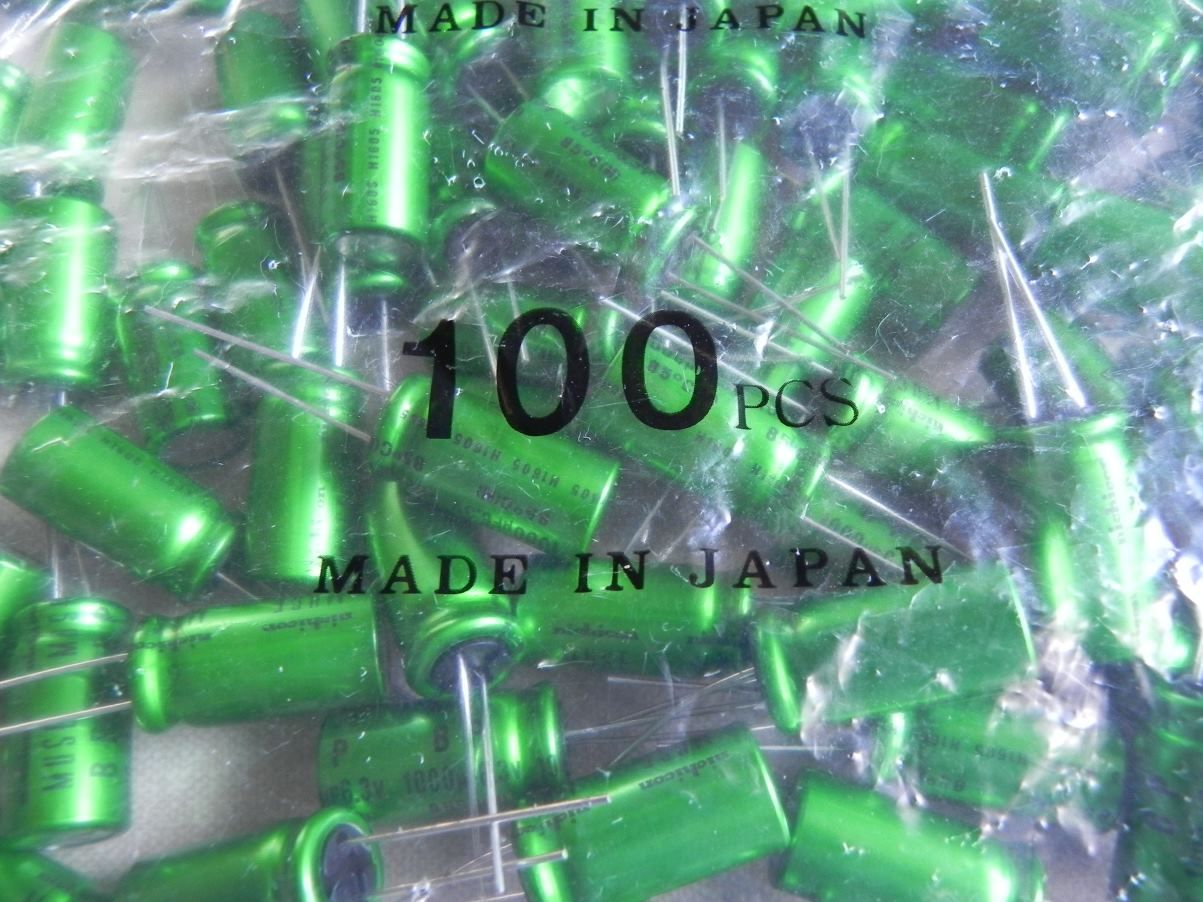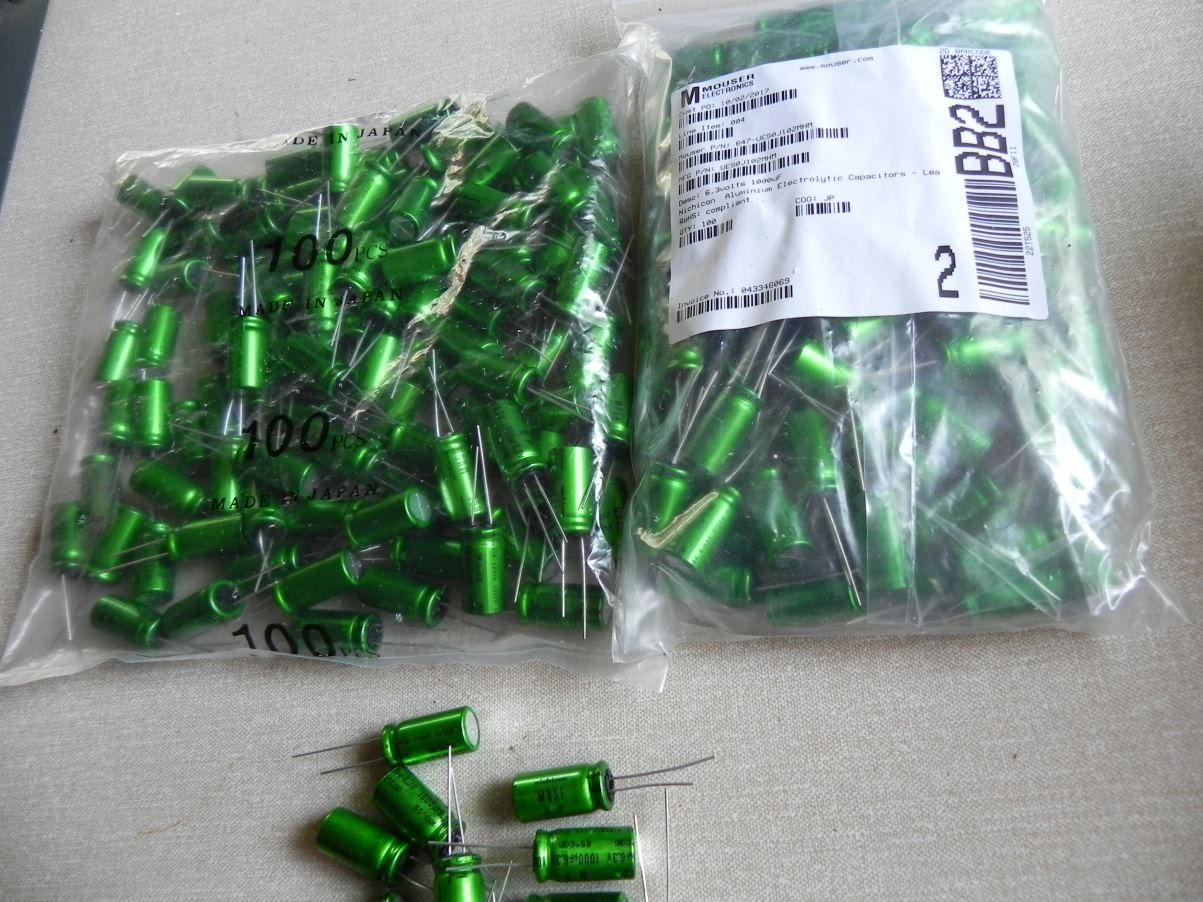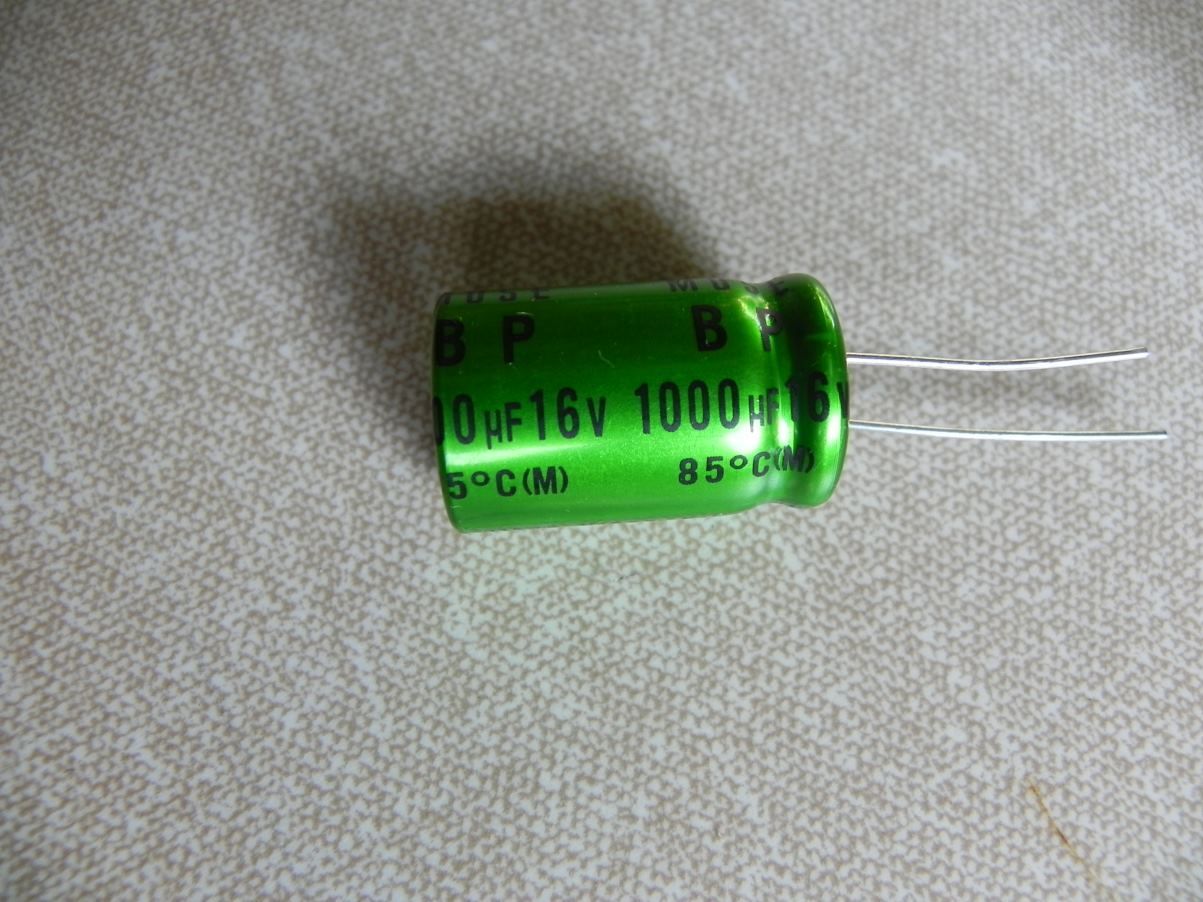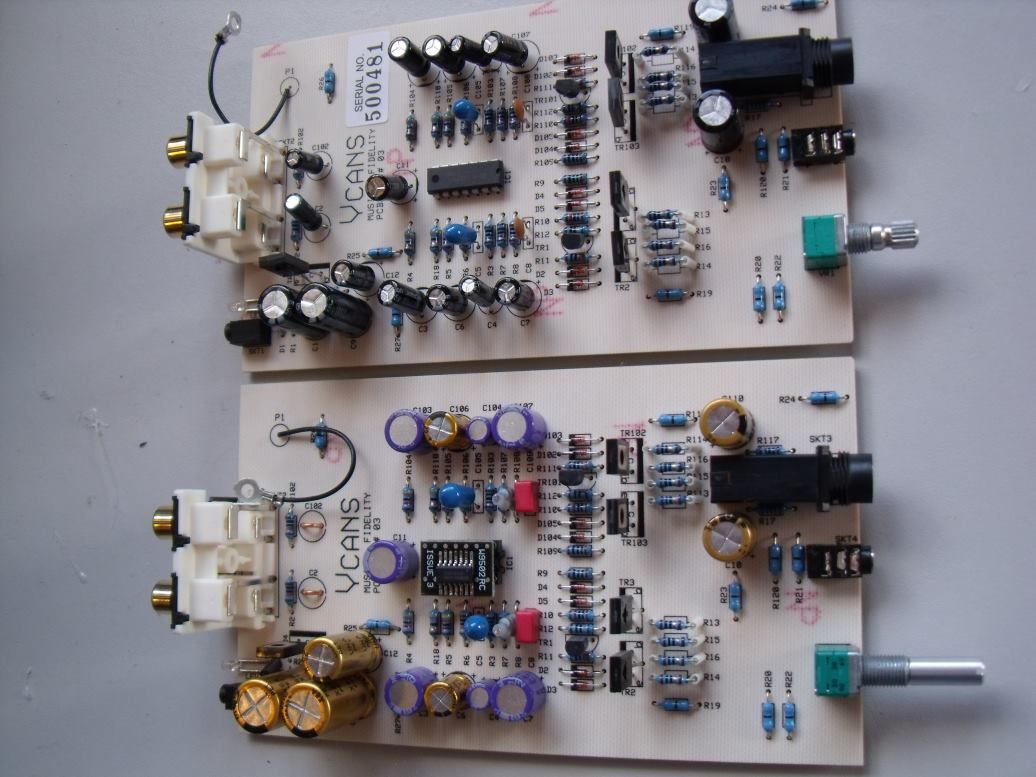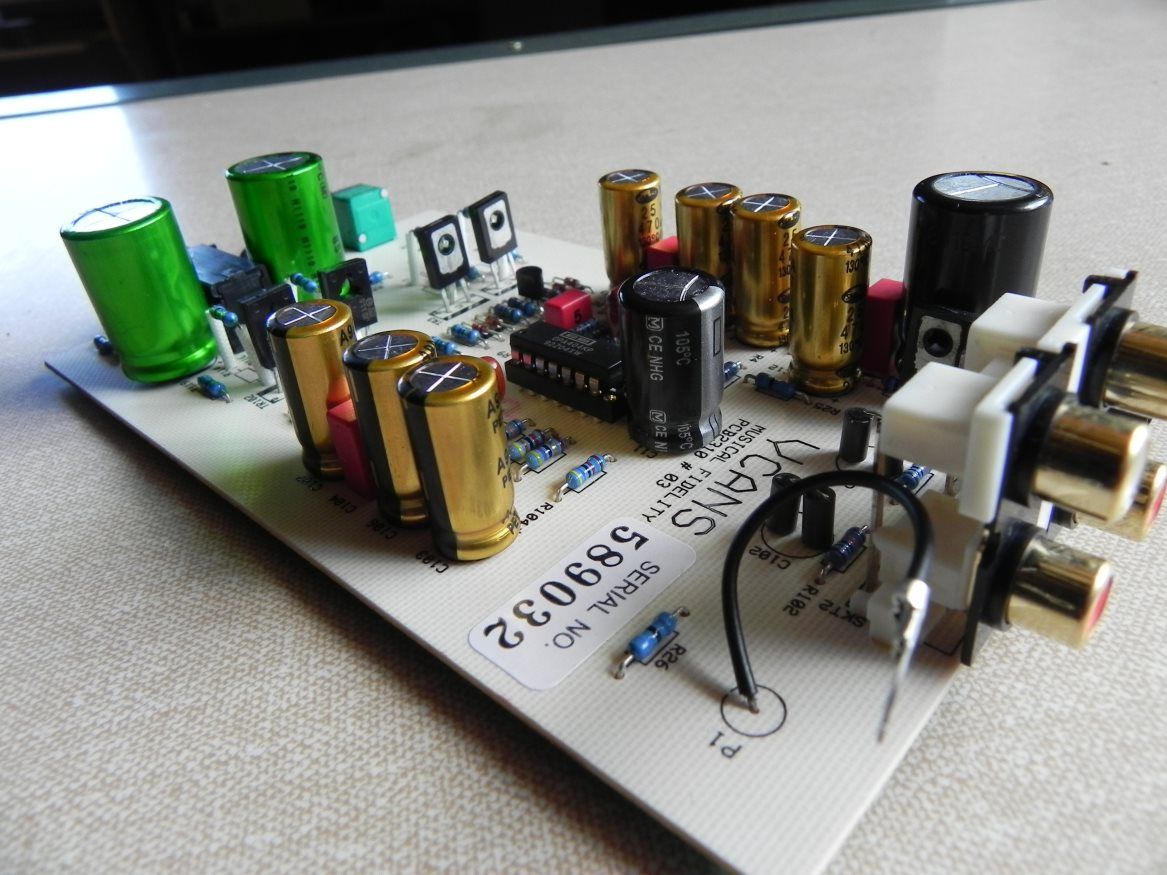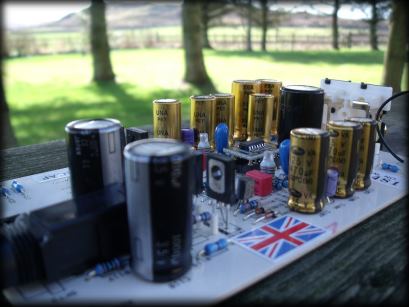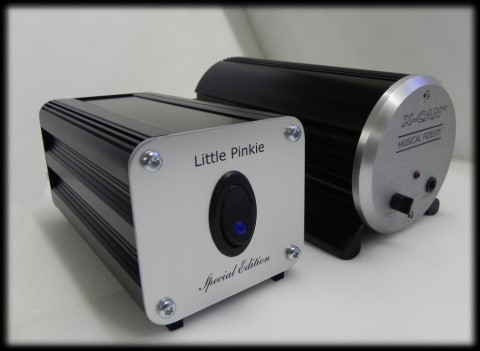|
|
Post by Pengo on Jul 8, 2017 11:14:03 GMT
I am a new guy here, but read some threads before. This is my V-CAN that I purchased second-hand in Russia for just 38£ (in rubles certainly  ). God knows why the owner got rid of it for this amount of money. It was in mint stock condition. Since I'm a bit of an engineer, I decided to get into it with a soldering iron. Board routing is nice, no SMD components, it is very easy to modify and repair the board. Stock solder, as far as understand, is trendy leadless substance. It is sh*t that is prohibited for use in hirel products in Russia. I want my amplifier to be reliable, that is why I use old-fashioned russian POS-61 (61% Sn / 39% Pb) or WBT-0800. This amp was soldered with WBT. I will not throw out it so I do not worry for the nature. Power protection diode still in place, 2х 1000 uF caps are changed to Panasonic FR 1500 uF 25 V, FR 470 uF 25 V near them. Another FR 1500 uF 25 V near opamp. These caps are rather small, cheap, has low ESR and high endurance. That is why I use them in power circuits. Then 6x 220 uF 16 V Nichicon FG near opamp and 2x 10 uF 50 V Nichicon FG. Probably not the best ones, but better than stock. Ceramic caps are changed to 220 pf WIMAs, 2x matched 5,1 KOhm russian MLT (metal film) gain resistors. Input caps - Nichicon ES 4.7 uF 50 V, output caps - Nichicon ES 470 uF 35 V. Amp drives 250 Ohm DT770Pro headphones, thus 470 is enough regarding proper cutoff frequency. It would be better to use 1000 uF 16 V at the output, but I didn't find them in stock in Moscow, and my impatience said "use 470" Electrolytic caps at the input is not the best solution, but I do not want to omit them. There is not enough space to place PP foil caps, maybe I will try PS/PET coated caps later. Output stage is ok, no mods here. 
Now move on to the next part - opamp. ST MC33079 in stock. According to the datasheet: ■ Voltage noise: 4.5 nV/√Hz ■ Gain bandwidth product: 15 MHz ■ Slew rate: 7 V/μs ■ Distortion: 0.002% Not so bad, frankly speaking. But it was changed for IC holder. I tried OPA404 (on pics), it's nice old amp: ■ Gain bandwidth product: 6.4 MHz ■ Slew rate: 35V/μs ■ Voltage noise: ~15 nV/√Hz But... it is designed for bipolar supply VCC = ±15VDC and shows derated performance from ±5 V. Here we have 12V max (-6/+6 virtually). It can work, it works, but not as nicely as it can. That is why I changed it for OPA1644: ■ Voltage noise: 5.1 nV/√Hz at 1 kHz ■ Gain bandwidth product: 11 Mhz (3.2 Mhz at full power) ■ Distortion: 0.00005% at 1 kHz ■ Slew rate: 20 V/μs ■ Rail-to-rail Output ■ Wide Supply Range: ±2.25 V to ±18 V Other opams I would like to try are OP484 and OPA4227/4228. But I suppose OPA1644 will be the best one. One more photo and apologize for probably bad English.  Some more notes and considerations: 1. Power matters. It is better to avoid using switching power supplies (PS) except the best ones that expensive as hell. Use linear power supplies. Another issue is the design of linear PS. It should have low output impedance not only at DC point (constant current), but at some frequencies range. Commonly used regulators like LM317 aren't the best solutions. However, they are better than switching PS. 2. Input caps. Though you can be sure that your sources have no bias, you can't say anything definite about your friend's sound card/dac/mobile phone/etc. I am not sure about all possible sources so caps are in their places. 3. Small film caps all over board here and there in parallel with electrolytic caps. They can both deliver power really quickly and filter noise, and form parasitic LC resonance contours. Board track longing 30 mm has the inductance roughly about 30 nH, this gives the resonant frequency about 0,9 MHz with 1 uF cap. It is far beyond audible range but some induced sub-harmonics can be audible. So, the behavior of the system should be measured, not estimated. There can be surprises. Is it really necessary to use such caps? What are pros and cons? I preferred to do without them. 4. Oxidized RCA block. It deserves changing, but I can't find a suitable good block on the board. Apparently, I'll have to put the connectors on the panel. |
|
|
|
Post by PinkFloyd on Jul 8, 2017 19:46:22 GMT
Hi Pengo, Welcome to the forum  You have done a very nice job on that V-CAN, well done! I agree with you, unleaded solder IS shit so we have a lot in common on that one  You are much better off using 60/40 (lead / tin) solder..... easier to work with and lasts a lifetime..... the unleaded stuff "may" comply with ROHS (Green directive) but it is pure rubbish. Critical components (aircraft / miltary and medical equipment) are exempt from the ROHS directive and they still use 60/40 solder which tell you a lot about how crap unleaded solder is. I have hundreds of Nichicon 6.3V / 1000uF ES capacitors in stock and am happy to send you a couple free of charge.... PM me your details and I'll get them in the post for you. 470uF is fine for your 250ohm beyer 'phones giving a 1.35Hz cutoff frequency but 1000uF is the best value to employ, especially if you are ever going to use low impedance headphones. 32ohm 'phones with 1000uF = 4.97Hz cutoff frequency so 1000uF are definitely the best for low AND high impedance 'phones. You don't need the 4.7uF input caps, if you have no DC present on your source output then you can remove them and jumper over the pads with a wire link. If you prefer to keep the input caps then Nichicon ES 10uF are best but 4.7uF are also perfectly good.... of course, no input coupling caps sound the best of all  OPA 4227 are SUPERB.... very similar signature to the OPA627 but if you want to get the best from the V-CAN (as a direct drop in replacement) then (to my ears) it has to be the OPA1644. Unfortunately, you can't get them in a DIP14 package any more so will have to fit them onto a SOIC to DIP convertor like this: rockgrotto.proboards.com/thread/11255/musical-fidelity-pre-upgrade-module Where did you source your DIP14 OPA1644 from? 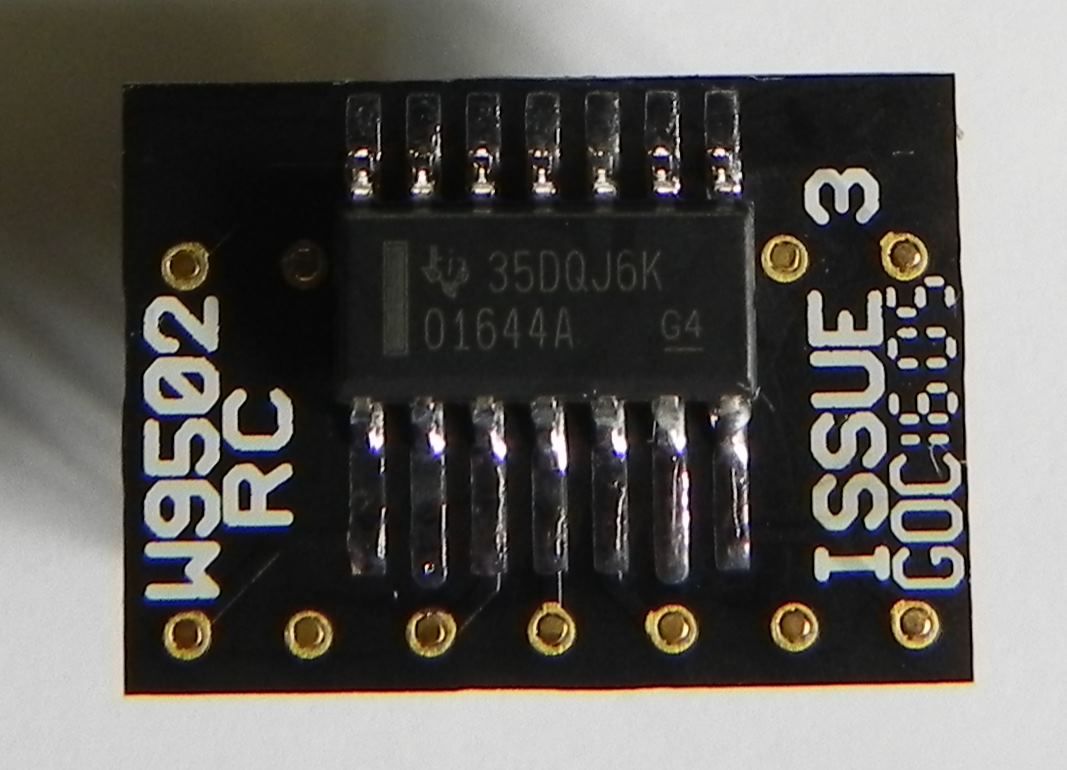 OPA4132 is also very good as a direct drop in replacement.... well worth a try...... the OPA4228 needs a bit of taming, it can sometimes tend to oscillate slightly so requires a bit more attention. OPA404KP are also very nice.... all depends on your ears..... I used them for ages (in over 30 V-CAN amps) 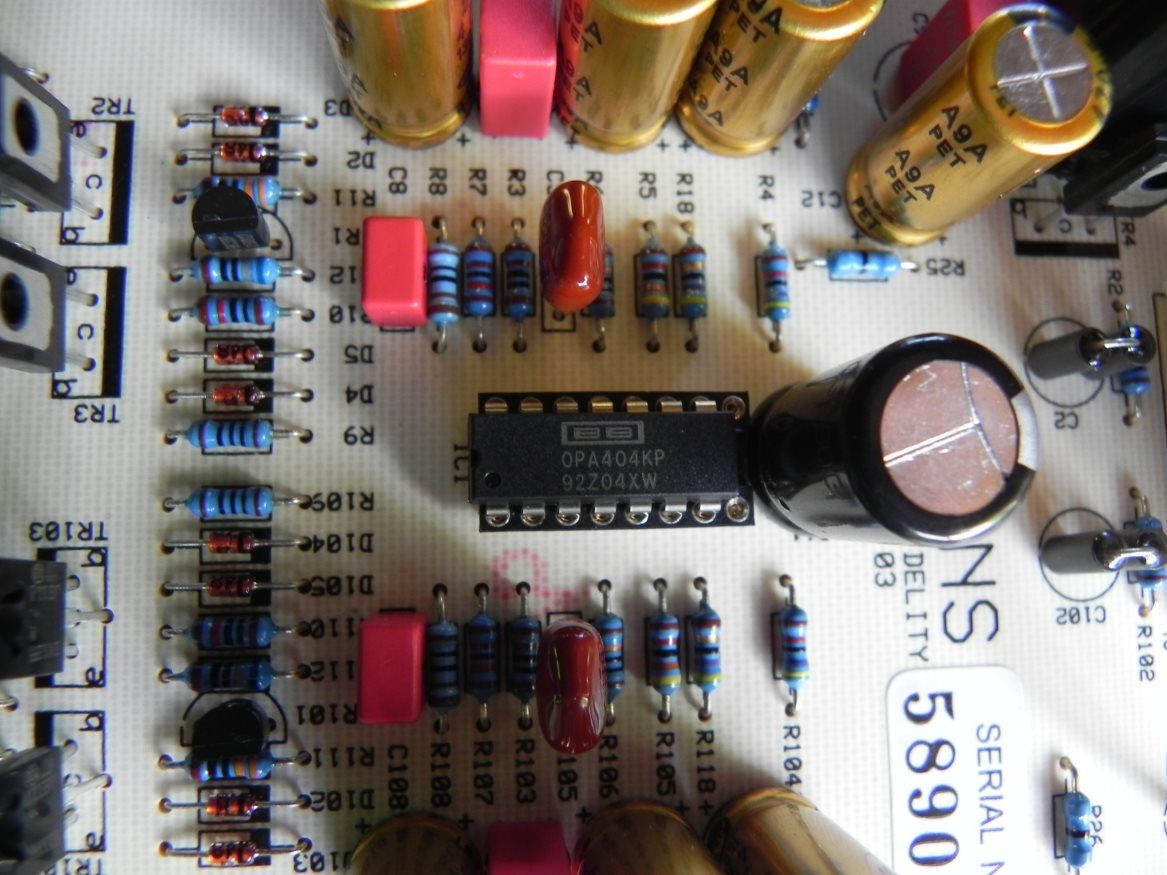 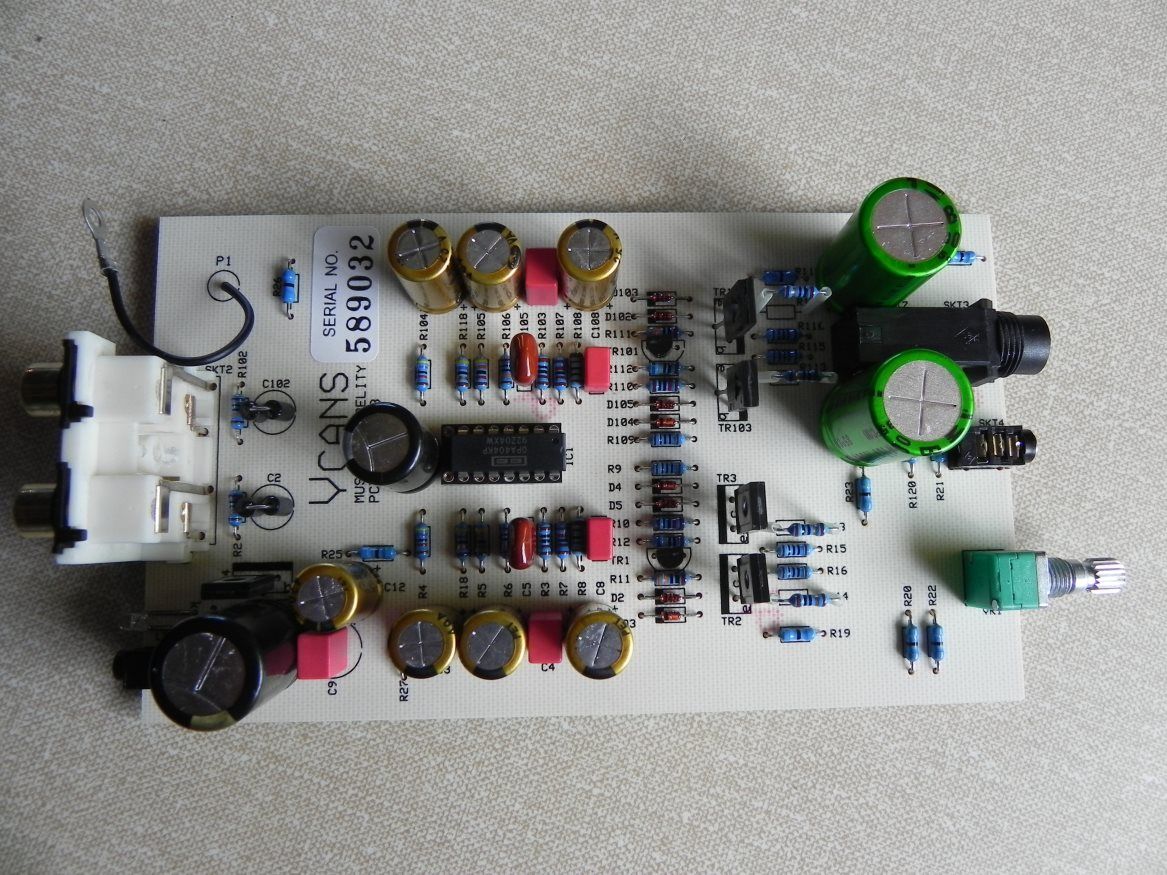 Very nice sounding opamps (OPA404KP) but I definitely prefer the OPA1644 these days..... they just sound more organic and have a bit more bite..... almost an Analogue Devices type house signature sound.... very reminiscent of the classic AD823 organic sound. As is always the case tho'...... only your ears can decide what sounds best  Should be a V-CAN in here somewhere (a few years ago) I do things a bit different now (a lot better!) rockgrotto.proboards.com/thread/1961/work-progress?page=15I have hundreds of the quad RCA blocks in stock.... brand new so need to fit panel mounted ones  Send me a private message and we can sort something out. Once again..... welcome to the forum Pengo, nice work and nice ideas...... Best regards, Mike. |
|
|
|
Post by Pengo on Jul 8, 2017 20:23:22 GMT
From nowhere.  I had to solder SOIC14 on the SOIC-DIP board just as you do. Opamp on photos - OPA404KP. There are some small things that would be nice to do like changing power socket to something that wobbles less, tuning caps (output, input, C4/C104 - film can be better in these positions) and so on. But in general it is already a very nice box. Moreover, once I saw a custom board based on V-CAN design on one of russian forums. Unfortunately, I do not remember where exactly. |
|
|
|
Post by PinkFloyd on Jul 8, 2017 21:03:20 GMT
It's a cheap amp..... in the UK the type of amp that comes in shelf hanging blow moulded plastic....... the type of thing you pick up off a shelf when you are checking out of a Musical Fidelity supermarket.
Nice amp for the low entry fee BUT it is more of a "ripen at home peach" than a "ready to eat" peach.
Best regards,
Mike.
|
|
|
|
Post by PinkFloyd on Jul 8, 2017 21:07:46 GMT
Once again....... nice job Komrade..... glad you are happy enjoying the music.
Mike.
|
|
nando
Been here a while!  The Frying Dutchman
Always look on the bright side of life
The Frying Dutchman
Always look on the bright side of life
Posts: 393 
|
Post by nando on Jul 9, 2017 16:05:00 GMT
Nice clean work, Pengo! Not being an English native speaker myself, your English is excellent (as long as you don't start your sentence with "So")
Do you notice a change with the v-cans?
Mike, you said the v-cans is cheap amp but is it any good?
Nando
|
|
|
|
Post by Pengo on Jul 11, 2017 11:05:30 GMT
The old linear power supply lurks behind the display. It provides +12V, -12V and +5V rails. I fit Panasonic HNG caps inside instead of old ones (about '87, Illinoice Capacitor) and new 7-pin robust output connector. It has very simple +12/-12 circuit: rectifier, filter cap, 3-legged integral regulator and output cap. Unused +5 V rail is more complicated and can provide more current. 
The quality of soung you hear depends not only on the amplifier and headphones, but also on the source. You can see small Audiotrak Dr. Dac nano box on the photo. This is a mediocre source because of many reasons. I will mention here only two: 1) It is powered by USB - dirty +5 V. Even if one would power it from good source, there are secondary switching supplies inside, including +5V -> -5V inverter. 2) AD8397 output amplifier with bad surrounding: too little input caps, bad power decoupling, especially considering switched -5V rail. In order to "correct" the situation with small capacitors at the input, they made a frequency correction in the feedback - +3dB bass boost. I measured the noise at -5V rail and at muted headphone output - the same shape, the same frequency. It is possible to improve output stage or even bypass it when using an external amplifier. But it is easier to buy something like Audigy Rx, which has earned a reputation as a good budget sound card. Certainly if you are using a desktop computer rather than a laptop. I asked my friend to listen to tweaked V-CAN with different sources: Audigy Rx mentioned above, stock ASUS Xonar STX, heavily modified Xonar STX with external DACs and clocks on daughter board ( audiomod.ru/projects/mod_stx/description.html) and totally custom setup with PCI-E to SPDIF card and external DAC. The verdict was this: "I can not say that it's amazing, but much better than I thought at the time you told me the cost." |
|
nando
Been here a while!  The Frying Dutchman
Always look on the bright side of life
The Frying Dutchman
Always look on the bright side of life
Posts: 393 
|
Post by nando on Jul 11, 2017 17:24:50 GMT
Pengo, you think you sqeezed everyting out of the v-can?
|
|
|
|
Post by Pengo on Jul 17, 2017 20:36:25 GMT
I am not sure. I'm going to try some more tweaks later:
1) increase output capacitors to 1000 uF;
2) use MKP (metallized polypropylene film) caps at the input (C2/C102), Jantzen Cross Caps or Mundorf MCap are the candidates;
3) try some suitable film caps or good electrolytic caps at C4/C104;
4) miscellaneous: new RCA block, new cute volume knob, better linear power supply...
It is possible to convert V-CAN to bipolar supply and get rid of output capacitors, but it is rather complex mod that can include even ripping of some tracks and extra wiring. I will not do it, it seems easier to make a new "bipolar twin of V-CAN" from the very beginning rather than to modify existing hardware. It is good to stop at the right moment.
|
|
nando
Been here a while!  The Frying Dutchman
Always look on the bright side of life
The Frying Dutchman
Always look on the bright side of life
Posts: 393 
|
Post by nando on Jul 18, 2017 8:56:11 GMT
I am not sure. I'm going to try some more tweaks later: 1) increase output capacitors to 1000 uF; 2) use MKP (metallized polypropylene film) caps at the input (C2/C102), Jantzen Cross Caps or Mundorf MCap are the candidates; 3) try some suitable film caps or good electrolytic caps at C4/C104; 4) miscellaneous: new RCA block, new cute volume knob, better linear power supply... It is possible to convert V-CAN to bipolar supply and get rid of output capacitors, but it is rather complex mod that can include even ripping of some tracks and extra wiring. I will not do it, it seems easier to make a new "bipolar twin of V-CAN" from the very beginning rather than to modify existing hardware. It is good to stop at the right moment. I am envious of your technical knowledge. I have no idea what you mean by bipolar power supply. |
|
|
|
Post by PinkFloyd on Jul 18, 2017 10:08:59 GMT
|
|
|
|
Post by PinkFloyd on Jul 18, 2017 19:42:45 GMT
1) increase output capacitors to 1000 uF; 2) use MKP (metallized polypropylene film) caps at the input (C2/C102), Jantzen Cross Caps or Mundorf MCap are the candidates; 3) try some suitable film caps or good electrolytic caps at C4/C104; 4) miscellaneous: new RCA block, new cute volume knob, better linear power supply... It is possible to convert V-CAN to bipolar supply and get rid of output capacitors, but it is rather complex mod that can include even ripping of some tracks and extra wiring. I will not do it, it seems easier to make a new "bipolar twin of V-CAN" from the very beginning rather than to modify existing hardware. It is good to stop at the right moment. 1) Yes, I have always fitted 1000uF / 6.3V output capacitors.... it's pretty much the perfect value. 2) You don't need capacitors at C2/C102, jumper over the pads with a wire link. No capacitor sounds better than an expensive one in this position  3) I am currently supplying ELNA SILMIC ll (Japanese silk fiber) caps with my upgrade kits for C4/C104.... they work really well in this position / beautiful organic tone (I have 500 in stock). Thing with film caps in C4/C104 is you are seriously limited by the availabe space.... in this photo you will see that I have used WIMA 3.3uF and they fit perfectly (I have hundreds in stock):  4) I have over 200 RCA blocks in stock and it is always a good idea to fit a new one every few years as they tend to oxidise over time..... they're cheap to replace and it makes sense to keep your inputs as fresh / clean as possible. If you are going to fit a nicer knob then it's a good idea to get rid of that crappy generic potentiometer (with splined shaft) and fit a nice ALPS 50K dual LOG mini with longer shaft: 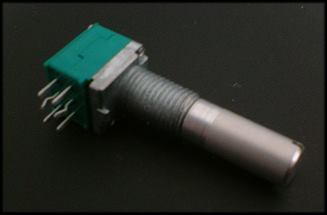 I keep these in stock and hand match each pot for perfect side to side tracking so you can be assured that the ALPS pots I sell are "spot on" in that respect. The stock generic pots are pretty horrendous with regard to side to side tolerance.... they are usually WAY out! You're pretty much limited to a smallish knob with the V-CAN due to the close proximity of the headphone jack although.... having said that...... I fitted a MAMA honker wooden one onto one V-CAN as the customer wasn't ever going to use the 3.5mm socket.... it looked pretty damned cool / I must look for a few photos. The other thing you may want to is play about with the gain..... if you find the volume a bit too "immediate" then you can experiment with different values at R8 / R108 (I think those were the resistors but will check my records). Best regards, Mike. |
|
|
|
Post by PinkFloyd on Jul 18, 2017 19:46:40 GMT
Another thing...... C1 and C9 are two 1000uF 'lytics in parallel making 2000uF. I recommend fitting a 3300uF to C1 and a 3.3uF film cap to C9..... deffo makes an improvement to the sonics Pengo.
|
|
|
|
Post by PinkFloyd on Jul 18, 2017 19:54:06 GMT
|
|
|
|
Post by Pengo on Jul 19, 2017 7:28:46 GMT
Is 6.3V enough? Anyway, I will measure max voltage between leads during work. I got it, but for some time they will be there. It is possible to fit tiny switch at the back to choose either DC coupled input (wire) or AC coupled (caps). A little more fuss, but this is a universal solution. Just yesterday I purchased 2x SILMIC II 10uF 25V  I agree. It is quite possible to try. I have only 2.2uF WIMAs, but I suppose it is not very bad.  |
|
|
|
Post by PinkFloyd on Jul 19, 2017 20:14:03 GMT
There is nowhere NEAR 6.3V on the output coupling caps so, yes, 6.3V / 1000uF Nichicon ES non polar caps are the perfect candidate...... small package size / they fit into the enclosure neatly / 1000uF does the intended job for both high and low Z headphones.
What voltage did you measure across the OP caps Pengu?
All the best,
Pinkie.
|
|
|
|
Post by Pengo on Jul 21, 2017 12:52:21 GMT
6.4 V at DC operation point.
|
|
|
|
Post by PinkFloyd on Jul 21, 2017 13:05:09 GMT
Wow....... that much? I better stick with 16V caps then, 6.3V is a bit close to the bone  |
|
|
|
Post by Pengo on Jul 21, 2017 14:15:10 GMT
It's almost a half of supply voltage. This is logical. Headphones output should swing around 0V DC point in both directions. How is it possible when you have only +12V/ground DC supply? Here's one way: оutput shifted to some DC voltage between 0 and +12, swings near this value, and then output capacitor removes that DC part. In my particular case that DC value is 6.4V. By the way, this means that it is possible to use as output caps ordinary polarized 'lytics like SILMIC II, Nichicon KZ and so on. Maybe I will try it somehow later. Today I put SILMICs II in C4/C104, will listen the amp on the weekend.  |
|
|
|
Post by Pengo on Jul 23, 2018 18:29:20 GMT
One more edition of V-CAN. Burr Brown OPA404 - voltage gain, virtual ground splitting; Panasonic FC, Nichicon KZ, Nichicon FG - power decoupling; Nichicon ES, Elna Silmic II, Nichicon FG - signal path, AC coupling; WIMA FKP2, Vishay PTF56 - feedback. 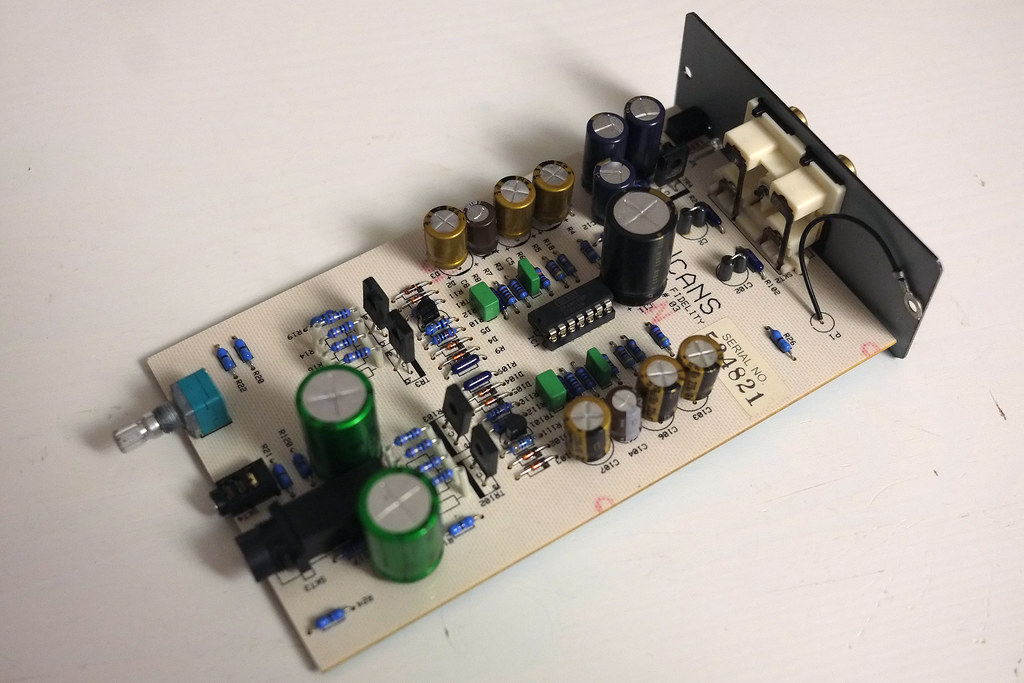 |
|
 ). God knows why the owner got rid of it for this amount of money. It was in mint stock condition.
). God knows why the owner got rid of it for this amount of money. It was in mint stock condition.

 ). God knows why the owner got rid of it for this amount of money. It was in mint stock condition.
). God knows why the owner got rid of it for this amount of money. It was in mint stock condition.




 You are much better off using 60/40 (lead / tin) solder..... easier to work with and lasts a lifetime..... the unleaded stuff "may" comply with ROHS (Green directive) but it is pure rubbish. Critical components (aircraft / miltary and medical equipment) are exempt from the ROHS directive and they still use 60/40 solder which tell you a lot about how crap unleaded solder is.
You are much better off using 60/40 (lead / tin) solder..... easier to work with and lasts a lifetime..... the unleaded stuff "may" comply with ROHS (Green directive) but it is pure rubbish. Critical components (aircraft / miltary and medical equipment) are exempt from the ROHS directive and they still use 60/40 solder which tell you a lot about how crap unleaded solder is.


 I had to solder SOIC14 on the SOIC-DIP board just as you do. Opamp on photos - OPA404KP.
I had to solder SOIC14 on the SOIC-DIP board just as you do. Opamp on photos - OPA404KP.

